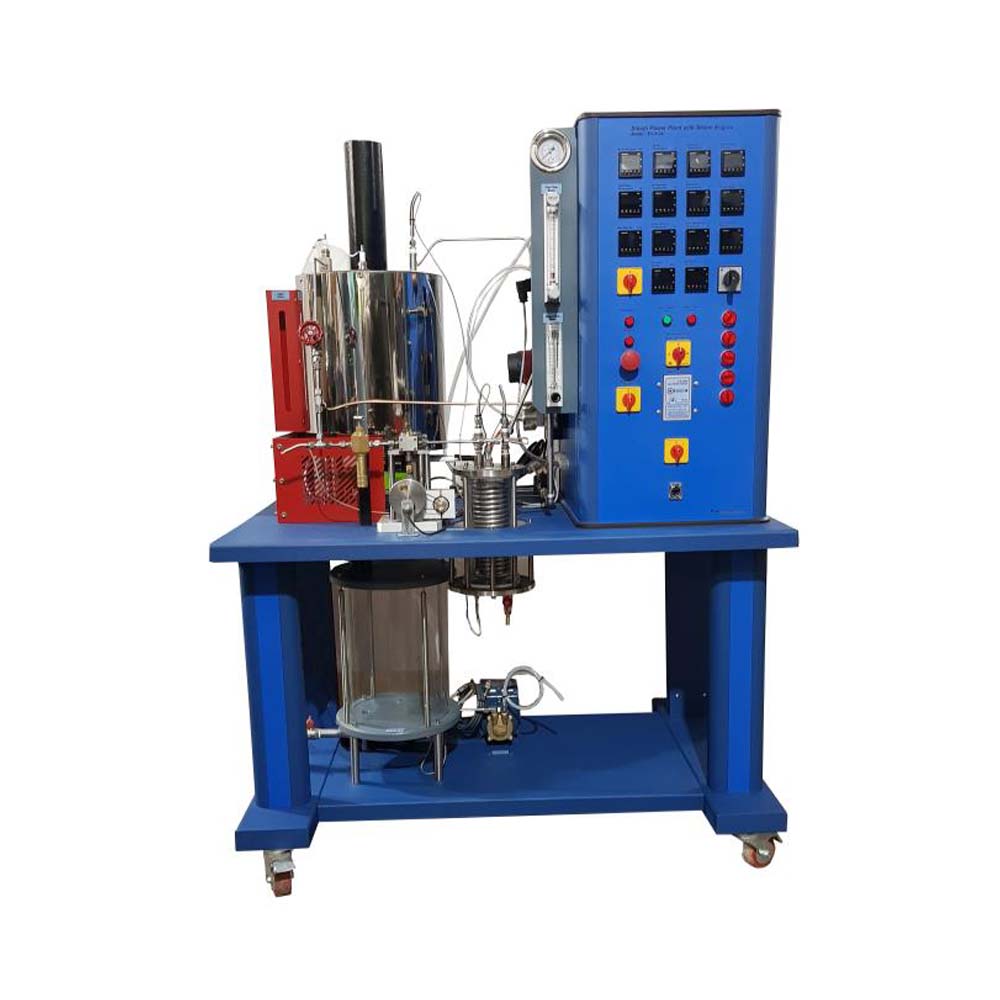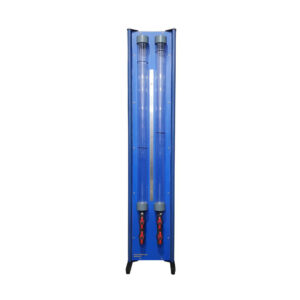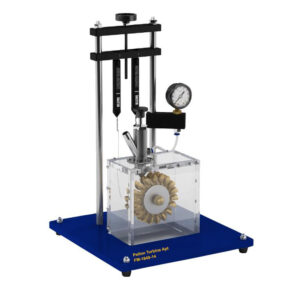In a steam engine, thermodynamic energy in the form of vapour pressure from steam generators is converted into mechanical energy. This can be used further downstream in the process to generate electricity or to power machinery and vehicles. A steam power plant consists of a heat source for generating steam, a turbine or steam engine with a generator, and a cooling device for condensing. The trainer contains the main components of a steam power plant: a gas fired steam boiler, a single-cylinder piston steam engine with a generator, a condenser, a feed water tank and a feed water pump. The steam boiler generates water vapour and supplies it to the piston steam engine. A piston and a crank mechanism convert the energy from the vapour into mechanical energy. A generator in the form of a DC motor generates electricity from the mechanical power. Light bulbs are used as consumers of the resulting electrical energy. The exhaust steam is condensed in a watercooled condenser. Safe operation is ensured by safety devices that monitor the boiler temperature and a safety valve. Sensors record the temperature, pressure, and flow rate at all relevant points. The measured values can be read on displays. Current and voltage from the generator are measured and displayed in the experimental unit. The well-structured instructional material sets out the fundamentals and provides a step-by-step guide through the experiments.
Experiments
- Demonstration of the function of a steam engine.
- Familiarisation with the components of a steam power plant and how they interact.
- Recording the vapour pressure curve.
- Effect of re-evaporation and backfeed of cold water.
- Determining consumption, the amount of steam generated, the boiler efficiency, and the capacity of the condenser.
Specifications
- Demonstration of a steam power plant with single-cylinder piston steam engine.
- Gas fired boiler for steam generation.
- Water-cooled condenser.
- DC generator.
- Light bulbs as consumers.
- Sensor and display for temperature, pressure, flow rate, voltage and current.
- Safety valve and temperature monitoring for safe operation.




